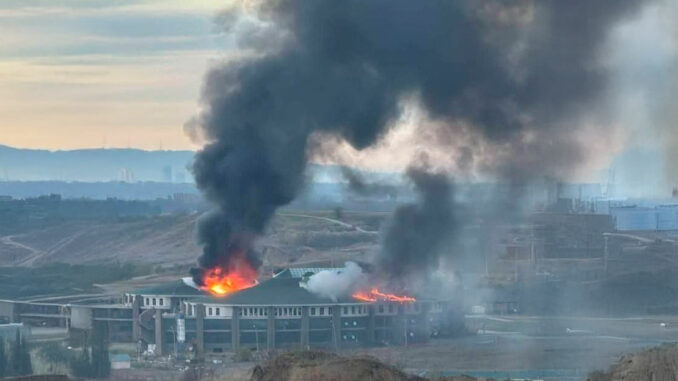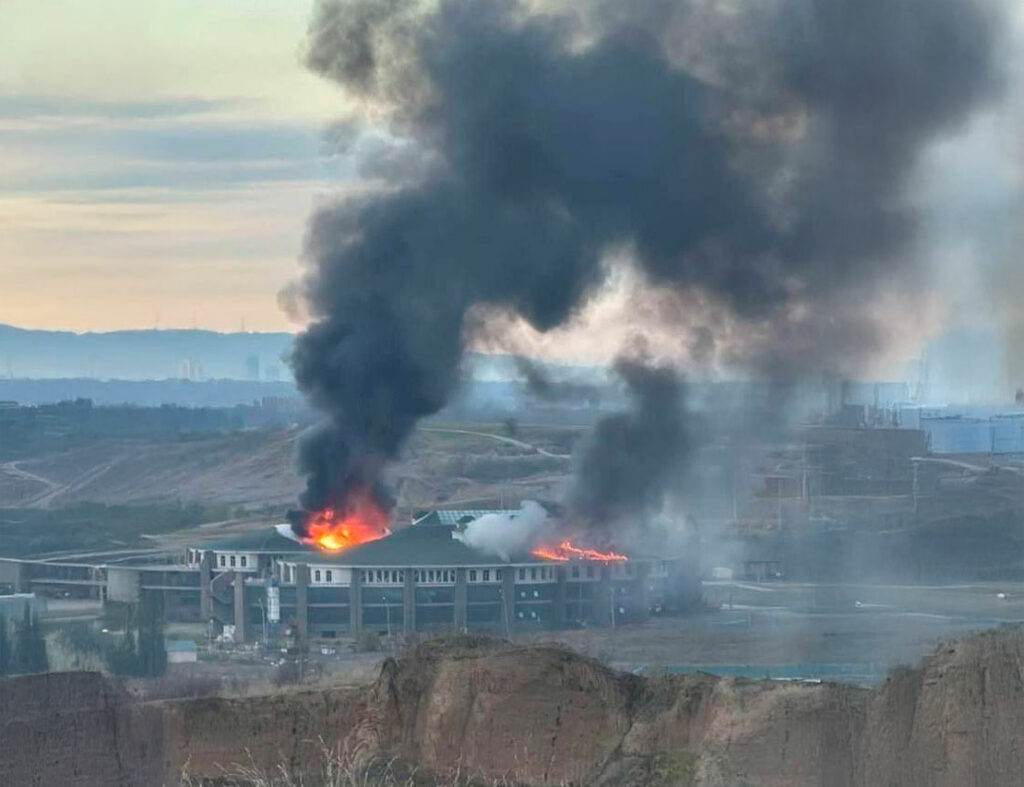
Ukraine strikes Chechnya’s Gudermes training center with long-range drones, marking a symbolic intensification of the conflict.
Ukraine has carried out an unprecedented attack, striking Chechnya for the first time with long-range drones, targeting a special forces training center in Gudermes. This center, run by Ramzan Kadyrov, who is close to the Kremlin, trains soldiers and paramilitaries working in Ukraine. Beyond its physical impact, the attack had symbolic significance, signaling the expansion of Ukraine’s strike capability to over 1,000 km. This unprecedented targeting highlights the vulnerability of Russian defenses to the expansion of Ukraine’s drone program.
Strategic and symbolic context of the attack
The drone attack on the Gudermes training center in Chechnya represents a new stage in the war between Ukraine and Russia. For the first time, Ukraine has carried out a strike of this scale against Chechnya, a territory actively supporting Russian operations in Ukraine. This training center, inaugurated by Ramzan Kadyrov in 2013, is a key location for training specialized troops sent to Ukraine, with over 47,000 soldiers having received training there.
The significance of this attack is twofold: it potentially disrupts operations at a strategic site for Russia, while dealing a symbolic blow to Kadyrov, a key ally of Vladimir Putin. The strike, which comes as Russia suffers setbacks in its drone defense efforts, exposes the vulnerability of Russia’s military infrastructure to Ukrainian advances in drone technology.
Analysis of Ukrainian drone capabilities
The attack on Gudermes reveals the expanding capabilities of Ukrainian drones, now capable of reaching targets over 1,000 kilometers from the front. With a range of around 780 km from Odessa and 650 km from Kharkiv, the range of the drones used by Ukraine marks a turning point in the country’s defense and attack strategy. Ukraine is developing a diversified arsenal, ranging from kamikaze drones to reconnaissance drones, enabling precise in-depth strikes.
The models used in this strike have not been officially confirmed, but Ukraine has previously used drones of national origin as well as models modified to optimize their range and explosive charge. This technological development enables Ukraine to target strategic sites well beyond the front lines, a development which is forcing Russia to reinforce its anti-aircraft defense systems.
Ramzan Kadyrov’s reaction and political implications
Ramzan Kadyrov, the leader of Chechnya, reacted with virulence, promising severe reprisals against the perpetrators of this attack. Kadyrov declared that Chechen forces would continue to support Russia in its efforts in Ukraine, but the attack raises questions about the effectiveness of Russian defenses and Moscow’s ability to protect its close allies. Kadyrov’s position is a sensitive one, as he is one of the few leaders to have publicly criticized the Russian military command’s handling of the war.
Moreover, Kadyrov could be perceived as vulnerable, especially as his influence within the Russian Federation is questionable. The attack could encourage other players in Russia to question the security of their territory. The symbolism of this attack, targeting a prestigious structure in a strategically loyal region, highlights Russia’s potential weaknesses and fuels internal tensions.

Consequences for Russian military operations and the Ukrainian front
The Gudermes center trains not only professional soldiers, but also volunteers for the Ukrainian front, with over 19,000 recruits recorded since the start of the Russian invasion. By targeting such a site, Ukraine could temporarily disrupt the training and logistics of some Russian troops, although the full extent of the damage is not yet known. This center specializing in training for combat operations, drone use and advanced survival techniques in war terrain is a pillar of the Russian military effort, making it a strategic target.
Russia’s response to this strike could influence the pace of future Ukrainian offensives, especially as Ukraine seeks to weaken Russian supply lines and military infrastructure in depth. By widening its zone of attack, Ukraine could force Russia to deploy more resources for the defense of its distant territories, diluting its forces on several fronts and potentially weakening its ability to respond in areas of direct combat.
An intensification of the conflict and prospects for further developments
This Ukrainian strike in Chechnya marks a significant change in the dynamics of the conflict, illustrating Ukraine’s bold use of drones and its ability to target highly symbolic sites. Beyond the physical damage, this action sends a clear message that remote and symbolic areas are no longer out of reach. The development of longer-range, more accurate drones opens up new prospects for Ukrainian military capabilities, posing additional defense challenges for Russia.
With the expansion of the drone program, Ukraine seems ready to pursue this strategy of targeted strikes in depth, forcing Russia to review its defensive priorities and anticipate risks on a wider territory. This strategy could lead to a reassessment of the need to secure Russian military infrastructures, and a rise in tensions within Russia’s political forces. In short, this new use of drones represents a technical and strategic challenge for Russia, a situation that could transform the dynamics of the conflict in the months to come.
War Wings Daily is an independant magazine.